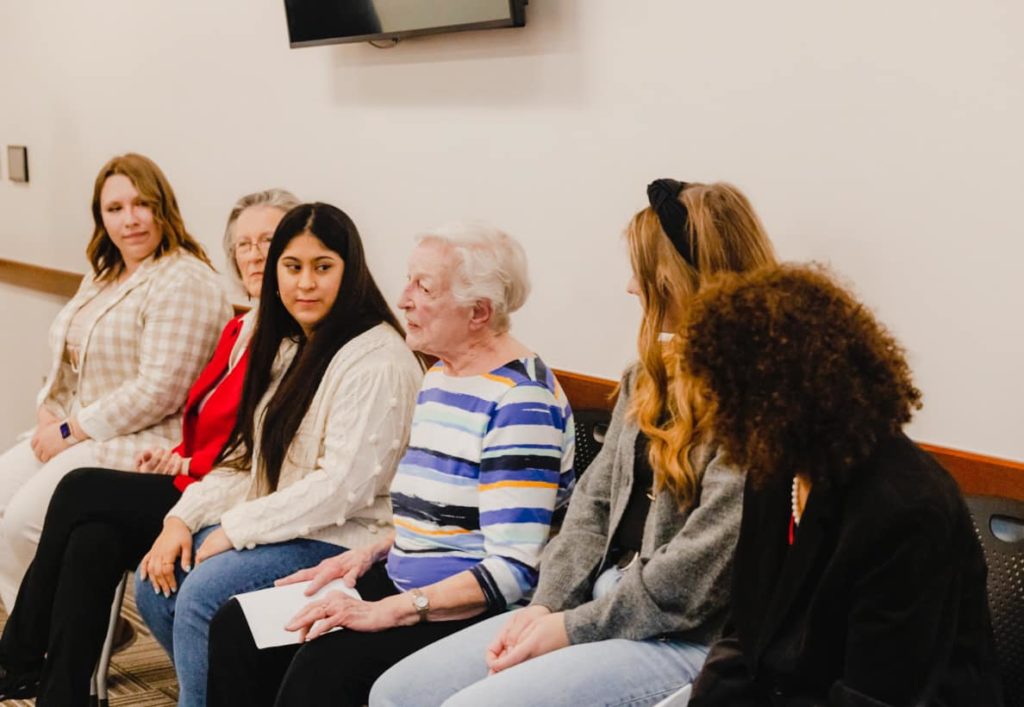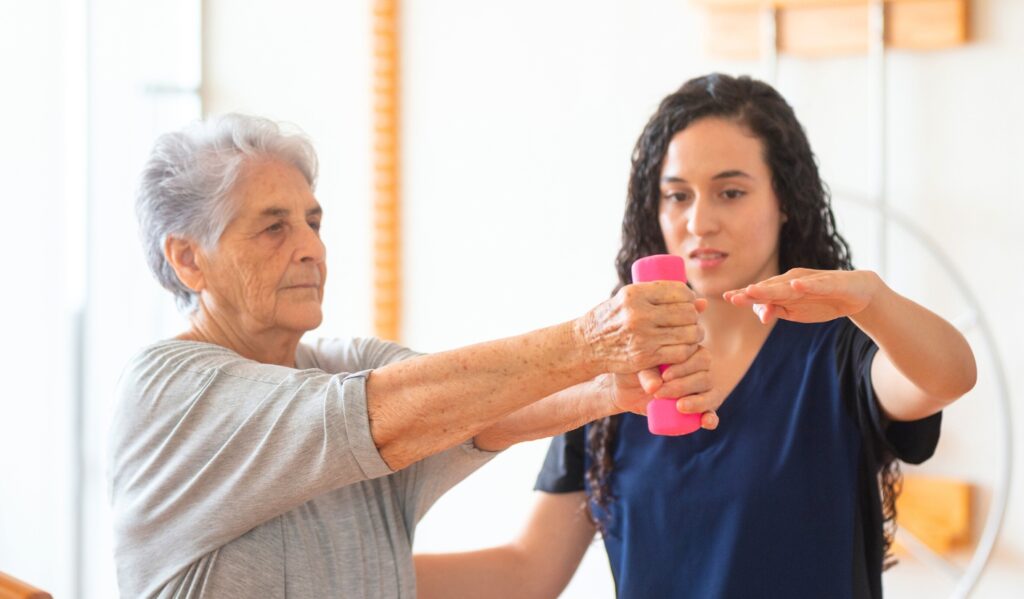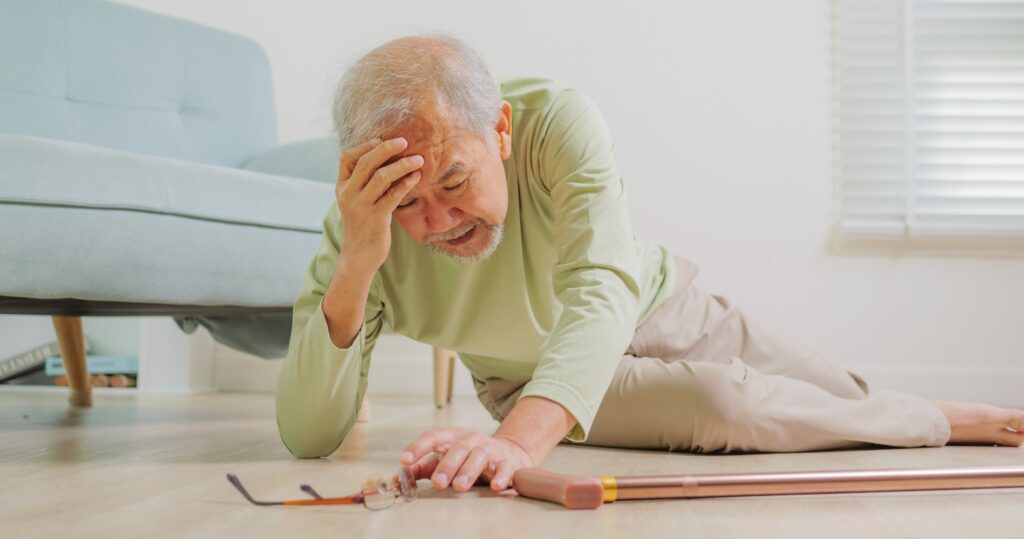Sunlight exposure is essential for important bodily functions, such as maintaining circadian rhythm and producing vitamin D, which helps our muscular, skeletal and nervous systems work properly. However, too much sunlight can cause short and long-term skin damage such as sunburn, aging spots, wrinkles and even cancer. In fact, skin cancer is the most common cancer in the United States and worldwide, with nearly 1 in 5 Americans diagnosed by the age of 70. As we age it’s important to pay special attention to how our skin changes and understand how to identify abnormal changes.
How Our Skin Changes as we Age
Just as our internal organs age, so does our skin. As we get older its common for our skin to become thinner, lose fat, and no longer look as smooth or firm as it did in our younger years. You might notice your veins becoming more noticeable or that scratches and cuts take longer to heal. According to the National Institute on Aging, here are some of the most common ways our skin changes as we age and what we can do to protect our skin:
Dry Skin and Itching
Many older adults experience dry skin patches as they age. It’s common to develop dry skin from not drinking enough liquids, spending too much time in the sun, living in a dry climate, smoking, feeling stress, or losing sweat and oil glands. However, dry skin can also be caused by various health problems like diabetes and kidney disease. Using moisturizers, taking fewer baths and bathing in warm, not hot water can help resolve these issues.
Bruises
It’s common for older adults to bruise more easily than younger people. Certain medications and illnesses can cause bruising and make the healing time longer. If you notice excessive bruising and do not know the cause, it’s important to contact your healthcare provider.
Wrinkles
As we age, it’s normal for our skin to wrinkle. Wrinkles can develop for a number of reasons including UV rays from the sun, diminished skin elasticity, and certain habits such as overexposure to the sun and smoking.
Age Spots and Skin Tags
Age spots, or flat brown spots caused by sun exposure, commonly show up on the face, hands, arms, back and feet. Skin tags, which are more common in women, can be found on eyelids, neck, armpit, chest and groin.
Skin Cancer
The main cause of skin cancer is the sun and can also be caused by sunlamps and tanning booths. There are three types of skins cancers including basal cell carcinoma and squamous cell carcinoma, both of which grow slowly and rarely spread to other parts of the body. The third type of skin cancer, melanoma, can spread to other organs. Checking your skin for new growths, bleeding moles, and sores that don’t heal can help you identify signs of cancer and allow you to seek treatment sooner.
Tips for Healthy Skin
While too much sun can be damaging to our skin and negatively impact our health, some sun can be good for you! As you continue to enjoy the summer weather and do more activities outside, there are a few ways you can protect your skin:
- Limit time in the sun. During the summer months, it’s important to try and avoid being out in the sun during times where the sun is the strongest, usually between 10 a.m. and 4 p.m. Also keep in mind you can get sunburned even during cloudy and overcast days.
- Wear protective clothing. If you have to be in the sun, you might consider wearing loose, lightweight, long-sleeved shirts and long pants. A hat with a wide brim can protect your neck, ears, eyes and head.
- Use sunscreen. According to AARP, a 2013 study found that daily use of sunscreen significantly slowed skin aging in healthy men and women. In addition to decreasing the risk of developing various types of skin cancer, sunscreen can also prevent wrinkling, coarser skin and age spots.
How to Effectively Use Sunscreen
Using sunscreen isn’t as straightforward as we might think. The overwhelming number of sunscreen options, levels of strength, and different brands can make choosing the right sunscreen feel daunting. However, there are a few tips you can keep in mind the next time you reach for a bottle of sunscreen:
- Pay attention to the SPF. Manufactures can sell sunscreens with SPFs higher than 50, however, many researchers and dermatologists believe that the higher numbers may not make a difference. It’s important to choose a sunscreen that offers broad spectrum protection as it ensures protection against UVA and UVB rays.
- Tanning can put you at risk. If you’re tanning in the sun, even while wearing sunscreen, you aren’t as protected as you might think. Once your skin begins to visibly darken, it’s a sign that UV rays have penetrated deeper into the skin. If you’ll be out in the sun for an extended period of time, it’s important to add hats and big sunglasses to your outfit.
- Pay attention to moisturizers. Daily moisturizers with added SPF is a great option for days you plan on being outdoors, but not sweating. Perspiration can reduce the sun protection from moisturizers, making you more vulnerable to the effects of the sun. It’s important to reapply sunscreen often, especially if you are sweating.
- Apply generously. Dermatologists and researchers both agree that a dab of sunscreen here and there is not enough. In fact, it’s recommended to use two tablespoons of sunscreen to cover your face and body, keeping in mind that this should be reapplied every two to three hours.
- Avoid spray sunscreens. If you’re applying sunscreen to your face, be sure to avoid spray sunscreen as it can irritate the lungs. Sprays are also highly flammable, so be sure to avoid using them if you are grilling, sitting by a fire, or have plans to use fireworks.
As you continue to enjoy outdoor activities this summer, be sure to protect your skin. It’s never too late to start wearing sunscreen and taking other protective measures to ensure skin health.








